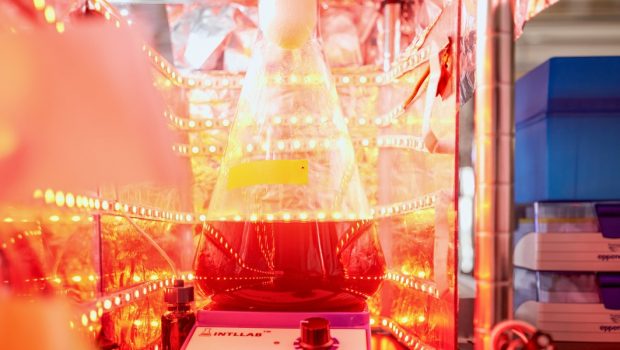How engineered microbes could cut aviation emissions
Cemvita’s main approach relies on photosynthetic microbes called cyanobacteria that use light and carbon dioxide to grow. Through genetic engineering, the company creates bugs that produce desired chemicals—in this case, components of jet fuel.
The details are still being ironed out, and Cemvita will use the United funding to develop and commercialize its lab-scale technology, says Roger Harris, Cemvita’s chief commercial officer. Cemvita is also working on using its microbes to produce ethylene, a building block of some plastics.
Cemvita’s fuel could approach being carbon neutral because the microbes are consuming carbon dioxide, says Moji Karimi, Cemvita’s CEO. The fuel would still produce emissions when burned, but they would be partially offset by the carbon that was captured to make it.
As for the light the microbes require, Cemvita will likely be using artificial light inside reactors, Harris says. While sunlight is free, relying on the sun would place constraints on how and where the company could build its production plants.
Cemvita is far from the first company to try making fuels with engineered microbes. Companies like LS9, founded in 2005, and Joule Unlimited, founded in 2007, captured large investments and excitement in the biofuels boom. Eventually, most of these efforts sputtered to a halt or pivoted away from fuels. LS9 was sold off in 2014, and Joule shut down in 2017.








Gloss